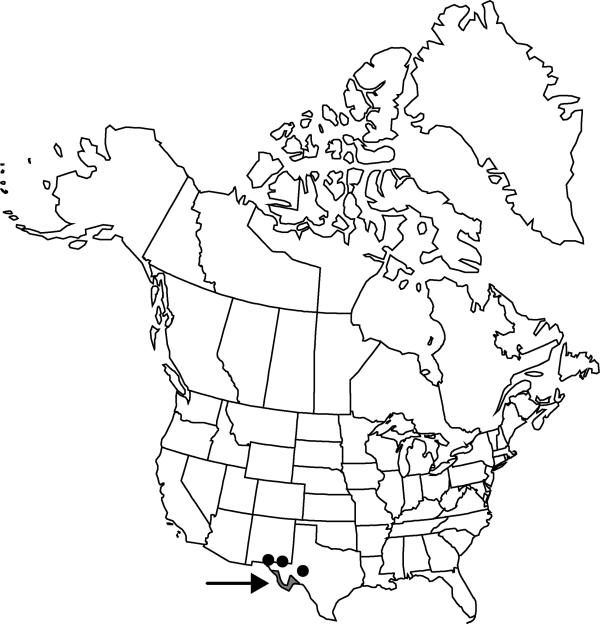Difference between revisions of "Echinocereus stramineus var. stramineus"
FNA>Volume Importer |
imported>Volume Importer |
||
| (2 intermediate revisions by 2 users not shown) | |||
| Line 42: | Line 42: | ||
|publication year= | |publication year= | ||
|special status= | |special status= | ||
| − | |source xml=https:// | + | |source xml=https://bitbucket.org/aafc-mbb/fna-data-curation/src/2e0870ddd59836b60bcf96646a41e87ea5a5943a/coarse_grained_fna_xml/V4/V4_310.xml |
|subfamily=Cactaceae subfam. Cactoideae | |subfamily=Cactaceae subfam. Cactoideae | ||
|genus=Echinocereus | |genus=Echinocereus | ||
Latest revision as of 21:57, 5 November 2020
Plants branched, forming clumps or compact mounds of 20–100(–500) branches, clumps 15–60(–100) cm, either dense or lax. Stems erect, long ovoid, less than 30 × 4.5–11 cm; ribs 10–16; crests slightly undulate; areoles 12–20(–25) mm apart. Spines 9–14(–16) per areole, straight, straw colored, ± translucent, often glassy white tinted with yellow, darkest spines sometimes tan or brown; radial spines 7–14 per areole, 15–40 mm; central spines 2–4(–5) per areole, abaxial central spine strongly projecting, all central spines terete or somewhat flattened, 57–100 mm. Flowers 8–12 × 10–12.5(–15) cm; flower tube 25–35 × 15–35 mm; flower tube hairs 1–1.5 mm; inner tepals rose-pink to magenta, darkest proximally and/or centrally, 55–60(–80) × 12–25 mm, tips white to greenish, relatively thin and delicate; anthers yellow; nectar chamber ± 5–8 mm. Fruits bright pinkish brown, with characteristic reticulate pattern of slightly darker or greener color between flattened tubercles, usually 35–40(–50) mm, pulp white to pale pink (varying on same plant). 2n = 44.
Phenology: Flowering Mar–Jul; fruiting mostly Aug.
Habitat: Chihuahuan desert scrub, rocky slopes, rarely flats, igneous and sedimentary substrates
Elevation: 500-1800 m
Distribution

N.Mex., Tex., Mexico (Chihuahua, Coahuila, Nuevo León).
Discussion
The densely branched stems of Echinocereus stramineus form hemispheric mounds bristling with unusually long, yellow-tinted spines, thus appearing like a heap of straw; old clumps of these cacti are unique visual dominants on many rocky slopes in the Chihuahuan Desert. The delicious ripe fruits of this species are much larger than those of E. enneacanthus, and may be the largest fruits in the genus. Rare white-flowered individuals occur.
Selected References
None.